How to Recognise A Dog Tooth Abscess and What To Do About It
The most common cause of facial swellings presented to this veterinary dentist is a tooth root abscess. The dog dentists note that specifically upper fourth premolar tooth, and upper canines is most commonly associated with facial swellings. Any tooth can theoretically cause a swelling or draining tract. Diseased teeth in dogs mouth causing an abscess are often fractured, but can also have wear, discoloration, severe periodontal disease (heavy tartar, gum recession, etc), or appear normal. Infection comes from disease inside the tooth (endodontic) or around the tooth (periodontal).
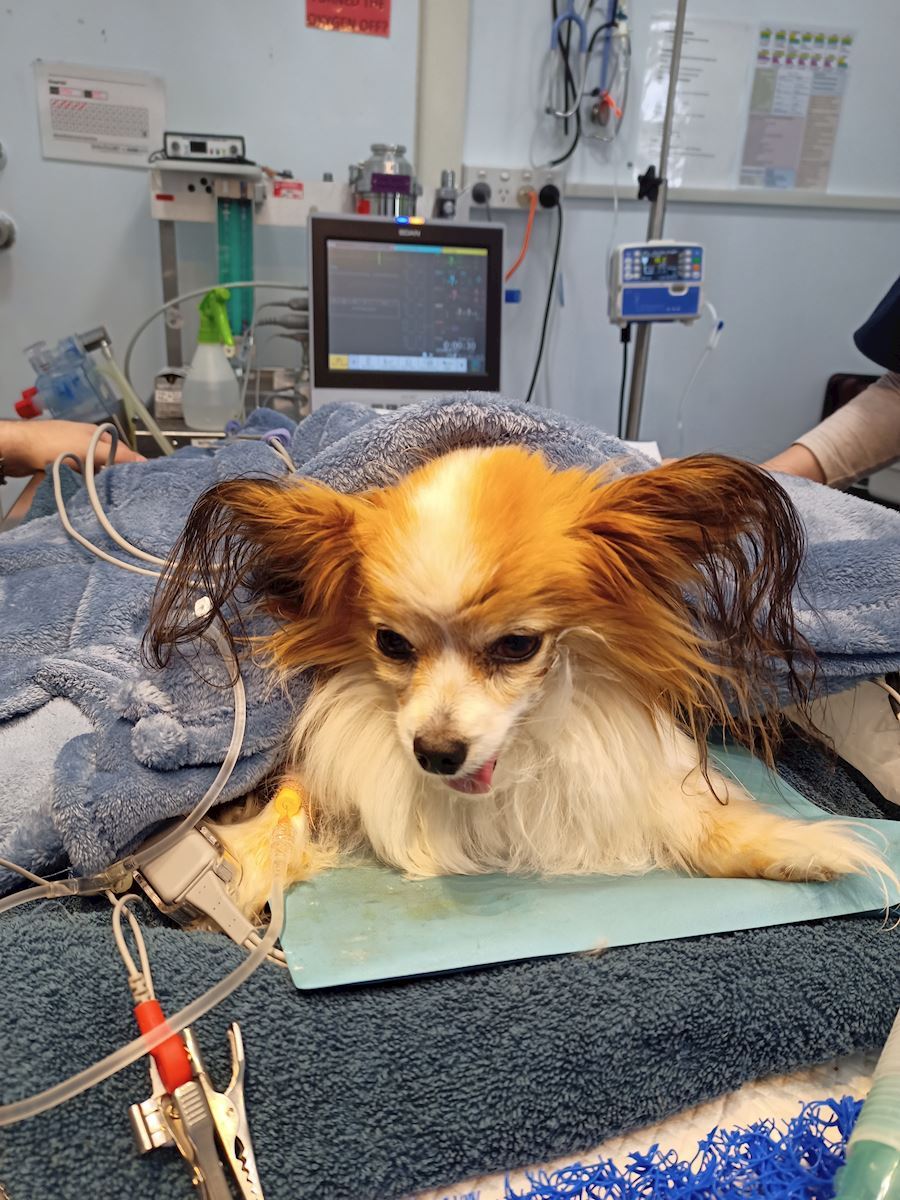
Flair a Papillon weighing 3.6 kg just after sedation – before the anaesthesia for the doggy dental – by a veterinary dentist.
Note – veterinary dentists are aware that not every facial swelling is a dental abscess – Other causes of disease, seen by veterinary dentists that may present with a facial swelling are allergic reactions, drug reactions, cysts foreign body’s etc
What is a carnassial tooth – it is the fourth upper premolar tooth, and has three roots. It is the biggest tooth on a dogs mouth and the most powerful. That is the tooth Hyaenas in the African game parks used to crush bone.
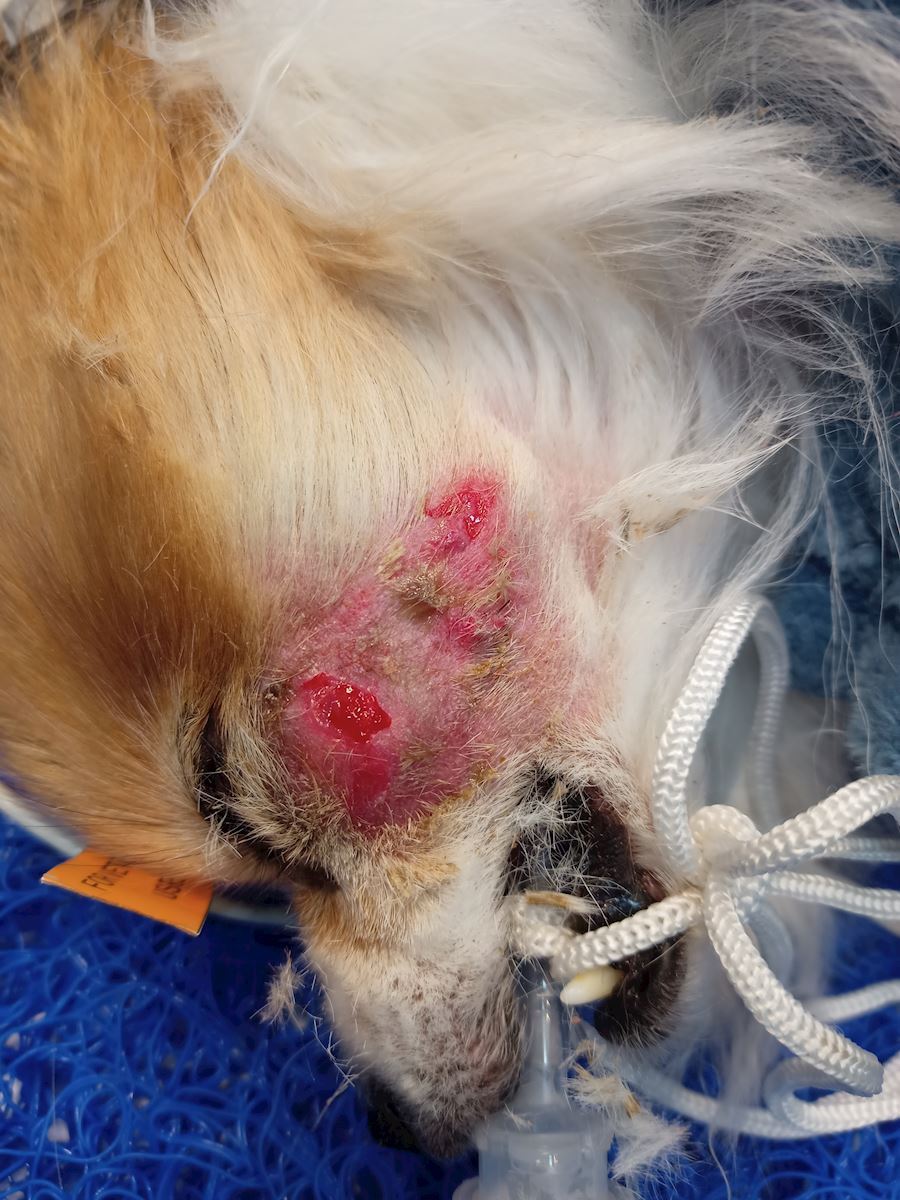
A carnassial tooth abscess in an older dog – note the swelling and dental pain.
A carnassial abscess is a tooth root abscess – an infection of the roots of this large premolar tooth.
Causes Of canine tooth root abscess – There are many causes of tooth root abscesses including trauma esp from chewing bones and periodontal disease.
Diagnosis Carnassial tooth abscess is often diagnosed by your Dental veterinarian based on the presence of a swelling or draining sore beneath the eye, and oral lesion in the mouth.
A Canine dental carnassial tooth abscess often results in a swelling or draining sore on the side of the face, below its eye.
Veterinary dental Treatment is removal of the infected tooth that is causing the abscess.
After the tooth is removed, your veterinary dentist may drain the abscess through the now empty tooth socket.
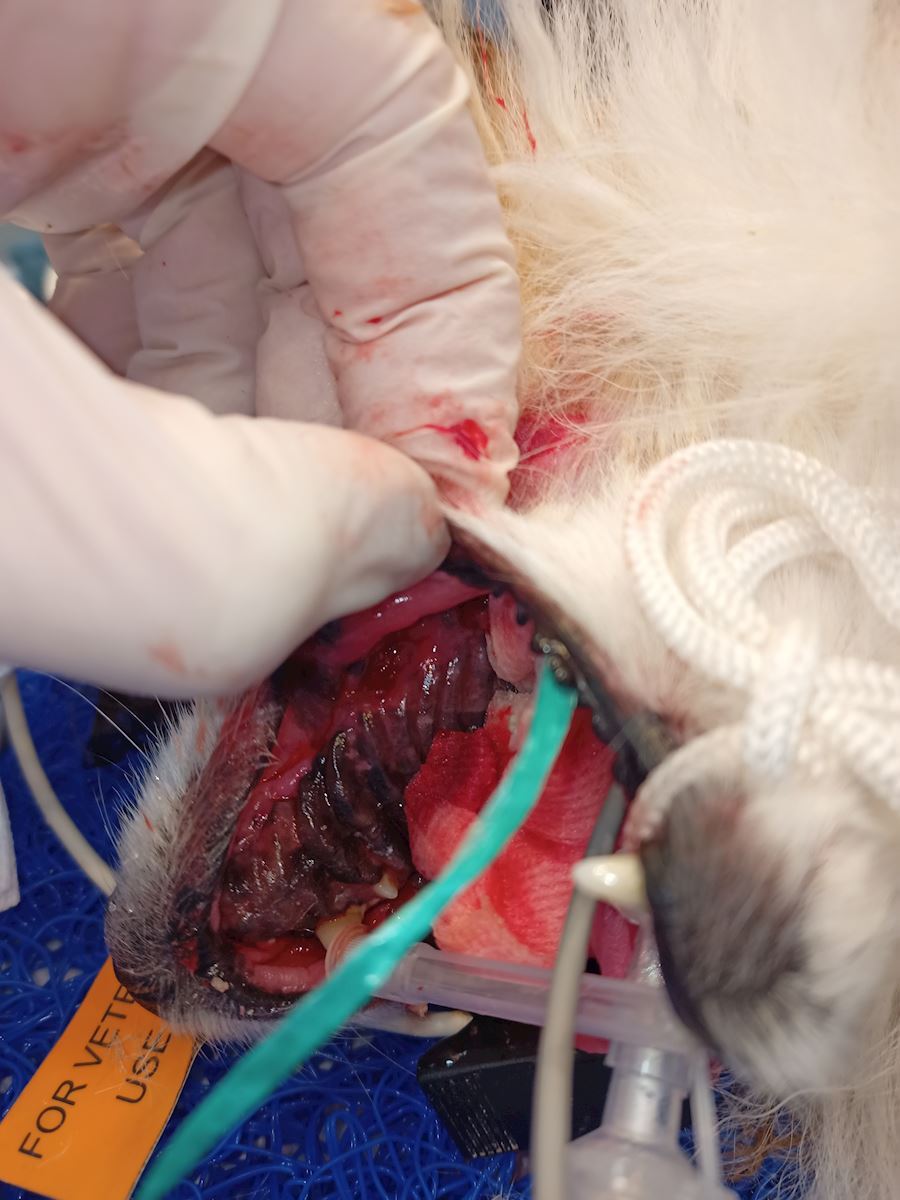
After the tooth is removed and the veterinary dentist clean the tooth socket.
Following Dog dental extraction, bleeding may continue for a day or two
Antibiotics are given before the dog dental procedure and before after the vet dentist removed the tooth
The swelling will subside, and the draining sore will often heal in about three days.
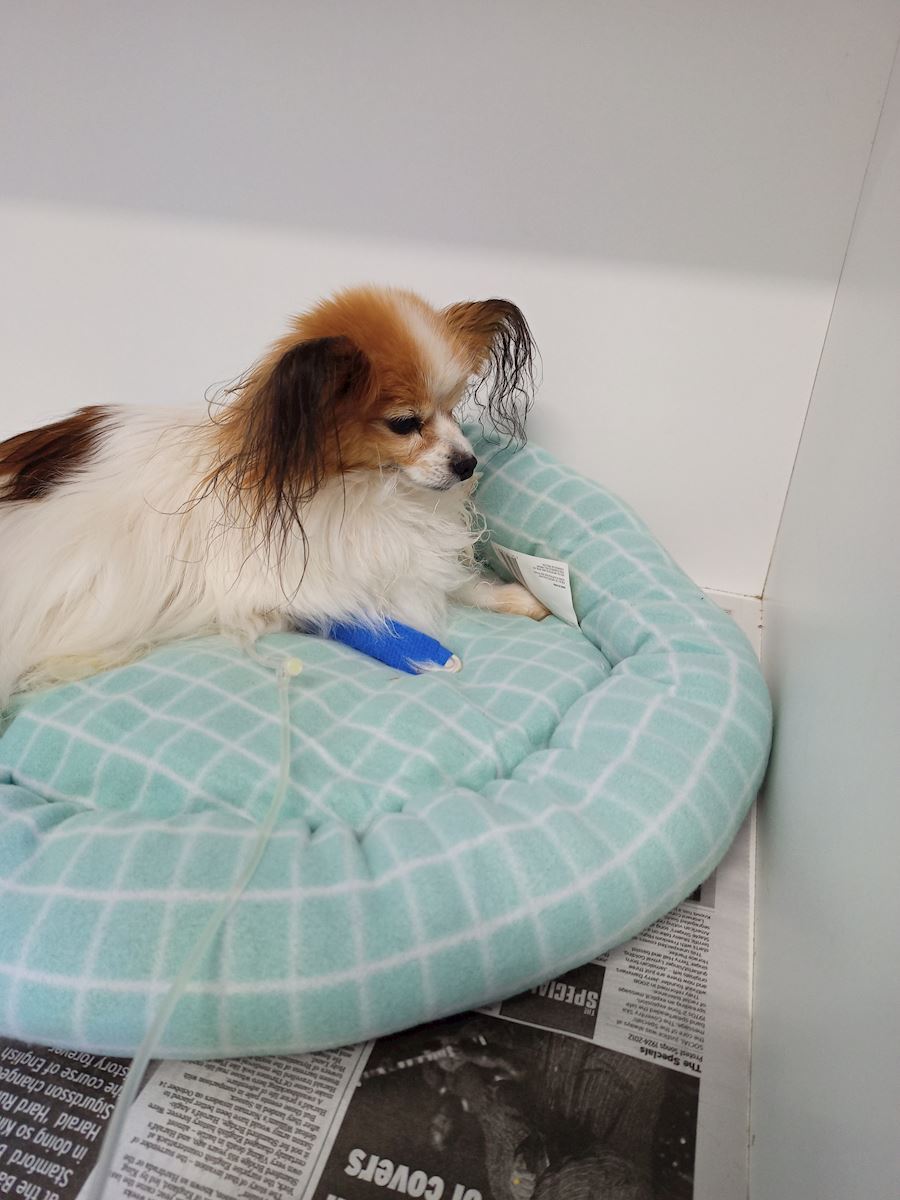
Flair 30 minutes after the procedure in a heated post op dental incubator at the veterinary dental facility.
Tooth Root Abscess in Dogs
By Lorraine Hiscox Veterinary Dental Specialist and Jan Bellows Veterinary Dental Specialist
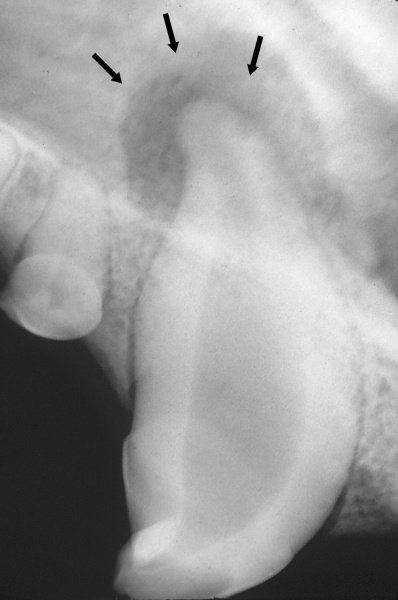
What is a tooth root abscess?
A tooth root abscess is a severe infection that develops around the root of a tooth. It usually occurs as a result of bacteria entering through a broken or traumatized tooth.
What causes a tooth root abscess?
A tooth root abscess forms when bacteria enter the exposed root canal of the tooth. The crown of a healthy tooth is covered by enamel. Enamel is essentially impervious, preventing bacteria from entering into the tooth. Beneath the enamel is a different dental hard tissue known as dentin. Dentin contains approximately 300-400,000 small openings (tubules) that communicate with the centre of the tooth. In the centre of the tooth is the pulp cavity which contains the soft tissue (blood vessels, nerve, and lymphatic tissue). The tissue in the pulp cavity is collectively referred to as the pulp. The pulp nurtures the normal tooth.
“A tooth root abscess forms when bacteria enter the exposed root canal of the tooth.”
If the protective tooth enamel is chipped, thereby exposing underlying dentin or the tooth is fractured more deeply exposing the pulp, bacteria can gain access to the centre of the tooth. In dogs, tooth fractures most often occur as a result of chewing on hard things such as bone, crate bars, antlers, ice cubes, cow or pig hooves, or hard nylon toys.
Once infected with bacteria, the pulp tissue becomes inflamed (pulpitis) and eventually the tooth dies (pulp necrosis). Inflammatory products produced by the bacteria and dying pulp tissue leak out of the bottom of the root (root apex) and infection now contaminates the bone surrounding the root resulting in apical periodontitis. A persistent infection can result in an abscess (an accumulation of pus) that may leak directly into the oral cavity or may leak out onto the skin (beneath the chin if the affected root is in the lower jaw or onto the face if the affected root is that of an upper tooth). Pulpitis, apical periodontitis, and tooth root abscessation can be very painful.
A tooth root abscess may also occur secondary to periodontal disease. In this scenario, the infection does not travel down to the bone through the centre of the tooth, but rather tracks along the outside of the tooth through the supportive tissues that surround the root.
What is the most common location for a tooth root abscess in dogs?
Any tooth can fracture; however, the most commonly fractured teeth are the canine teeth (2 in the upper jaw and 2 in the lower jaw) along with the maxillary fourth premolars (the largest premolar tooth in the upper jaw) and the mandibular first molar (the largest molar in the lower jaw).
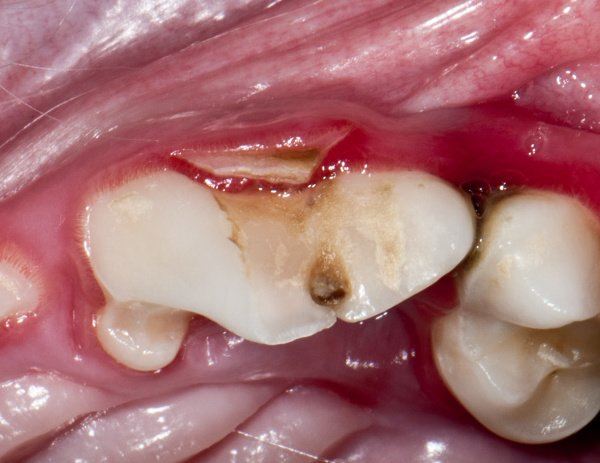
Slab fracture?
A slab fracture develops when a dog’s cheek teeth bites down onto a hard object, at just the right angle and force, breaking off a portion of the tooth surface, exposing the underlying sensitive dentin and possibly even the pulp. The slab that breaks off may be a small chip or a large piece of the tooth and the fractured portion may extend below the gum (gingiva) onto the root surface.
Are there any obvious symptoms when a dog has a tooth root abscess?
Abscessed teeth are very painful, but dogs may not show obvious signs of pain. Instead, your dog may be reluctant to chew on his toys or may pull away when his head is touched. An observant owner may notice that their dog is only eating or chewing on one side of the mouth or is dropping food when eating.
Some dogs will have bad breath while others will paw at the affected side of their face or rub their face along the ground. Pet owners may erroneously assume their pet simply has an itch, but the behavior may be an indication of an abscessed tooth.
If the abscessed tooth is the upper fourth premolar or first molar tooth, the outward signs are often mistaken for some other problems, such as an eye infection or a puncture wound. This happens because these tooth roots lie just below the eye, and when they become abscessed the infection quickly spreads to the surrounding tissues. The tissue below the eye will usually become swollen and inflamed just before the abscess bursts. If you look inside the dog’s mouth, there will often be swelling and redness on the gums around the affected tooth. If swelling and infection has extended behind the eye your pet may react with a painful response if you attempt to open his mouth.
How is a tooth root abscess diagnosed?
There is a high degree of suspicion for a tooth root abscess when there is a draining tract onto the face, below the chin or into the oral cavity. However, intraoral dental radiographs (X-rays) are required to definitively diagnose a tooth root abscess.
What is the treatment for a tooth root abscess?
A tooth root abscess is a very painful condition and needs to be treated as soon as possible. Antibiotics will be prescribed to control the infection and either an anti-inflammatory and/or pain relief medication will also be prescribed. Although this medical treatment will deal with the symptoms, it will not treat the underlying tooth injury and antibiotics alone will not cure a tooth root abscess.
“A tooth root abscess is a very painful condition and needs to be treated as soon as possible.”
There are only two options for treatment of an abscessed tooth. One option is root canal therapy (endodontic treatment), which can preserve the structure of the tooth. The other option

Is Extraction Necessary?
It is necessary that the tooth root in question be assessed clinically and via radiographs to determine if your dog is a good candidate for root canal treatment. The extent of trauma to the crown of the tooth, pre-existing infection (bone destruction around the root), along with the overall periodontal health of the tooth will impact whether a recommendation is made for root canal treatment or extraction. Root canal therapy should be rechecked with intraoral radiographs (requiring a brief general anaesthetic) 3-6 months after the initial treatment and annually for the next couple of years.
Your veterinarian will be in the best position to recommend the appropriate option for your dog, depending on the severity of the abscess and the degree of damage to the tooth and surrounding structures. Most veterinarians will refer these complex cases to a veterinary dental specialist for assessment and treatment (avdc.org).
Post-operatively, regardless of which treatment option is followed, antibiotics may be prescribed. Treatment for pain (anti-inflammatory and/or pain medication) will be prescribed. Your dog may or may not require a change in diet during the post-operative recovery period. Once the surgical extraction site has healed, most dogs can resume their regular diet and activity level.
All dogs should have a dental examination performed by their veterinarian at least every six months. For a dog that has previously developed a tooth root abscess, your veterinarian may recommend more frequent dental examinations.
Contributors: Lorraine Hiscox, Jan Bellows, – Specialist Veterinary Dentists
